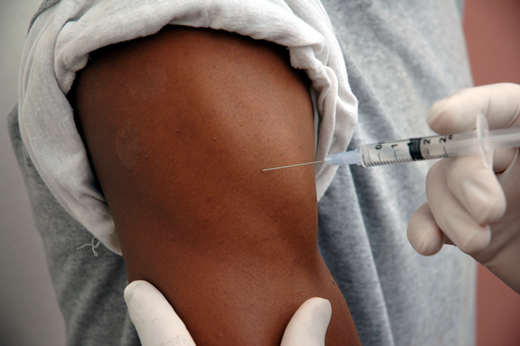Almost 140,000 people around the world died from measles in 2010 despite availability of a vaccine for more than 45 years. Despite great progress in reducing measles mortality by more than 74 percent since 2000, measles is still a major killer, particularly in developing countries.
"Widespread use of measles vaccines has saved numerous lives, but too many children are still dying unnecessarily from this very preventable cause of death," says Walter A. Orenstein, professor of medicine in Emory University School of Medicine and associate director of the Emory Vaccine Center. "It is critical to ensure that children in all countries have access to and are vaccinated with measles vaccines."
According to a Comment article in this week's The Lancet by Orenstein and Alan R. Hinman, senior public health scientist at the Task Force for Global Health, global measles eradication is biologically feasible, but will require sustained vaccination programs and better surveillance to measure actual deaths and to guide prevention programs.
The Comment is linked to an article describing a new World Health Organization (WHO) report on global measles mortality reduction.
Despite substantial reductions in measles mortality, the WHO did not reach its 2008 goal of 90 percent by 2010 over 2000 levels. Despite very positive progress, delayed implementation of accelerated disease control in India and continued outbreaks in Africa stalled momentum towards the goal.
According to Orenstein and Hinman, five of the six WHO regions have now set goals to eliminate measles by 2020, and there is a worldwide goal of a 95 percent reduction in measles mortality by 2015 compared with 2000 estimates.
Progress in measles reduction can be hindered by the failure to adequately immunize children as they become age-eligible for measles vaccination and the failure to immunize new immigrants, Orenstein and Hinman point out.
"Outbreaks of measles with complications and deaths can be a greater motivating force for change than immunization coverage data gaps and the theoretical potential for outbreaks," say the authors. A resurgence of measles in the U.S. in 1989-91, for example, led to major investments in the overall National Immunization Program.
This year saw the highest incidence of measles in the United States since 1996 because of cases of measles virus brought back to the U.S., often by Americans traveling in other countries or foreign visitors to the U.S.
"Appropriate vaccination not only offers individual protection, but also protects the community as a whole, including those who cannot be protected by vaccine because they are too young, have compromised immune systems, or have medical reasons why they cannot be vaccinated," says Orenstein.
"This paper highlights critical gaps in available data to guide prevention programs," say the Comment authors. "Surveillance and vital record registrations are inadequate in much of the world. What is most needed is not more sophisticated ways to estimate mortality, but to measure mortality directly. As measles is considered for eradication, it will be critical to improve surveillance to the point that deaths and cases will actually be measured, not estimated."

